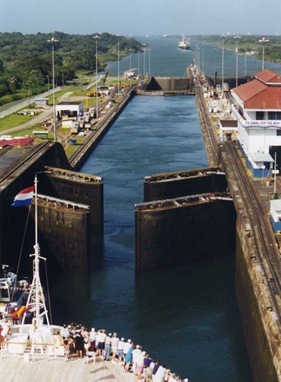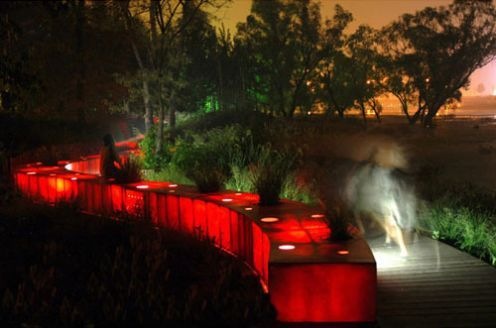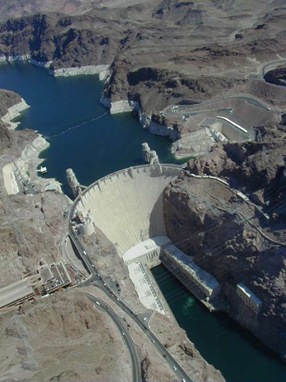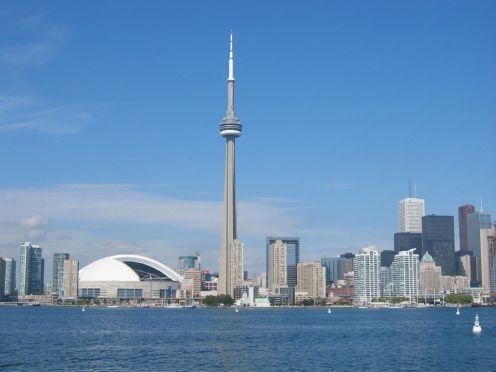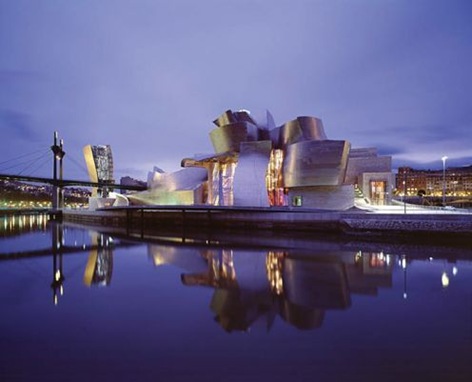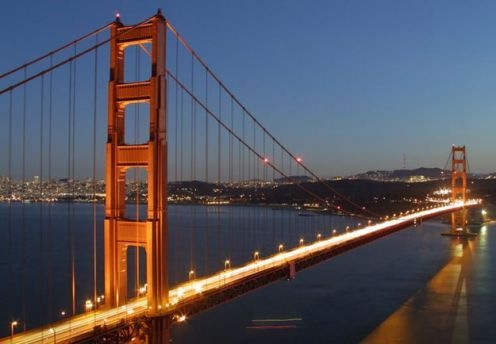Followers
Monday, January 31, 2011
The Crooked House, Sopot, Poland
Sunday, January 30, 2011
Kunsthaus, Graz, Austria
Saturday, January 29, 2011
Cathedral of Brasília, Brazil
Friday, January 28, 2011
The Atomium, Brussels, Belgium
Thursday, January 13, 2011
KVLY-TV mast
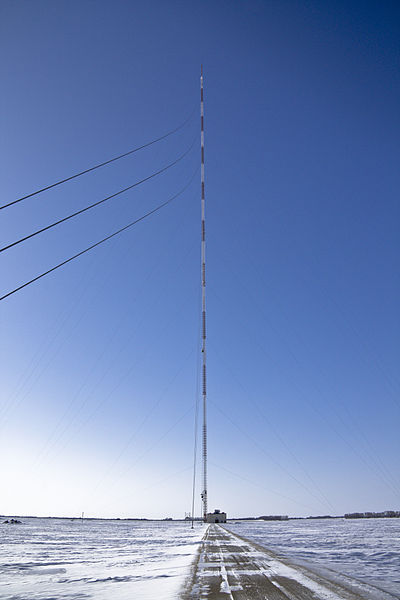
It remains the second or third tallest structure in the world. It is a guyed mast, not a self-supporting structure, and is therefore not included in lists of tallest buildings. The height of the transmitting antenna itself is 113 feet (34 m) and is included in the height of the tower as the lattice tower itself ends around 1,950 feet (590 m). The tower weighs 864,500 pounds (392.1 t) altogether and takes up 160 acres (0.65 km2) of land with its guy anchors.The 113' antenna alone weighs 9,000 pounds. In 1989, daredevils climbed the tower and BASE jumped from it.

Wednesday, January 12, 2011
Duomo di Milano

A truly must-see attraction for any visitor to Italy’s city of fashion, the Duomo di Milano is the fourth largest cathedral in the world and a classic example of Gothic architecture. Started in the 14th century, the construction of Milan’s cathedral was completed five centuries later, during the reign of Napoleon. One of the symbols of Milan, the cathedral is a spectacular monument, standing at 182.5 meters, from the ground to its highest spire.
Located in the very heart of the city, in the square that shares its name, the Duomo di Milano has been the scene of countless social, cultural and religious events, throughout the centuries. One of the most impressive churches in the world, the Duomo di Milan is one of the city’s most popular tourist attractions.
Tuesday, January 11, 2011
Palace of Alhambra, Spain
Monday, January 10, 2011
Badshahi Mosque, Lahore, Pakistan
Badshahi Mosque, Lahore, Pakistan
Badshahi Mosque is a beautiful example of Islamic architecture. The Mosque was built by the sixth Mughal Emperor Aurangzeb. Amazingly, the beautiful mosque was built in a limited time period of only two years. The construction of the mosque began in May 1671 and completed in April 1673. The mosque accommodates 10,000 worshippers in its main prayer hall. 100,000 worshipers can offer prayer in its courtyard which is the largest Mosque courtyard in the world. It remained the largest Mosque in the world from 1673 to 1986. Today, it remains the second largest after Faisal Mosque, Islamabad, Pakistan.
Sunday, January 9, 2011
Lighthouse of Alexandria, Island of Pharos, Alexandria, Egypt
Lighthouse of Alexandria, Egypt
Replica of Lighthouse of Alexandria in China
The Lighthouse of Alexandria served a practical purpose besides being a marvelous example of architectural elegance. It ensured safe return for the sailors to the Great Harbor. A mirror was mounted at the top of the lighthouse which could reflect light more than 35 miles off-shore. Scientists today are amazed by this mirror. It was one of the 7 wonders of the world. It is 393 to 450 feet tall. The amazing idea was conceived in the early 3rd century BC by the ruler Ptolemy I. It was built in 3 stages and each stage was built on the top of the lower stage. For centuries the lighthouse lit the ways of the sailors. The structure was damaged by earthquake. A scale replica of the Lighthouse of Alexandria is in the Window of the World Cultural Park in China.
Saturday, January 8, 2011
Leshan Giant Buddha, Sichuan, China
Leshan Giant Buddha, Sichuan, China
The famous 71 meters (233 feet) tall statue is carved out of a cliff face. It shows a seated Buddha with his hands on his knees. This statue is the tallest statue of the Buddha and the shoulders are 28 meters wide. The smallest toenail can easily seat a person and the 7 meters wide ear can accommodate two people . The head of the Leshan Buddha is 14.7 meters tall and 10 meters wide and is covered with 1,021 buns of curly hair. People say:
“The mountain is a Buddha and the Buddha is a mountain”
It lies at the confluence of the Minjang, Dadu and Qingyi in city of Leshan in the Chinese province of Sichuan. The statue took 90 years to complete. It’s construction was started by a Chinese monk named Haithong in 713, hoping to calm down the turbulent water. He gouged out his own eyes to gather funding to build the structure. He thought this would express his sincerity. The work stopped with his death and was started by his disciples 70 years later. The project then was sponsored by a regional Governor. The statue finally got completed in 803. Leshan Giant Buddha Scenic Area is listed in UNESCO World Heritage Site.
Friday, January 7, 2011
Sultan Ahmed Mosque/ Blue Mosque, Istanbul, Turkey
Sultan Ahmed Mosque, Istanbul, Turkey
The beautiful Mosque of Istanbul, Turkey was built in year 1616. It got it’s name “Blue Mosque” because 20,000 handmade ceramic blue tiles are used in the interior of the Mosque. The Blue Mosque was accredited by Sultan Ahmed when he was only 19 years old. The mosque’s construction began in year 1609 and completed in a time period of 7 years. The sultan died an year after the construction and is buried outside the mosque. The Mosque has a capacity of 10,000. The Mosque has lamps covered with gold and gems. This Mosque shows excellent workmanship.
Thursday, January 6, 2011
Great Pyramid of Giza, Egypt
Giza is a city in Egypt on the bank of river Nile. After Cairo and Alexandria, it is the third largest city in Egypt. The Great Pyramid was the tallest building in the world until the 19th century. The length of the side of the pyramid has reduced from 754 feet (230.33 meters) to 745 feet (227 meters). The Pyramids of Ancient Egypt were built as tombs for Kings (and Queens). Amongst 93 Pyramids in Egypt, the most famous ones are those at Giza. All work was done without machinery.were needed 40.000 people. We have to note that the Egyptians did not know then wheel and all work is done without any machinery. It was constructed using around 2,300,000 limestone block. Each block weighed on average, 2.5 tons. Building this in 20 years required installing approximately 800 tonnes of stone every day. It is made of 2.3 million blocks which means more than 12 of the blocks must have been moved into place each hour, day and night. It took the lives of millions of poor people as they were treated savagely by the Pharaohs.
Wednesday, January 5, 2011
Leaning Tower of Pisa, Italy
The leaning tower of Pisa, also known as the Tower of Pisa, is a bell tower next to the Church of the city of Pisa in Italy. The tower is 186.27 feet tall from the ground towards the lower side and 186.02 feet on the higher side. It is 8 feet wide from the top and 13 feet from the bottom. The Tower had 296 and 294 steps and weighs 14,500 metric tons. The seventh floor on the north side has two steps fewer.
The construction of the Tower Of Pisa took 177 years. It has three different sections. The first floor was constructed in the year 1173 and it was in the year 1178 when the tower had the thirds floor, when the tower started to sink. The tower leans on one side because of a three meter foundation on unbalanced soil. The flawed design has become one famous example of architecture. War halted the construction for an entire century.
Tuesday, January 4, 2011
Mausoleum of Taj Mahal, Agra, India
Taj Mahal described as “A tear drop on the cheek of time” by Rabindranath Tagore is a finest example of Turkish, Persian and Mughal architecture. The Mausoleum was built by Mughal Emperor Shah Jahan in the memory of his beloved wife Mumtaz mahal. The construction began in 1633 AD and 20,000 skilled craftsmen from allover the subcontinent and the neighbouring countries worked for 17 years to complete the monument. The chief architect was Ustaad Ahmed Lahori. The main dome of Taj Mahal measures about 110 yards in circumference and is about 107 yards above the ground. The material was brought in from all over India and central Asia and it took a fleet of 1,000 elephants to transport it to the site. Taj Mahal’s construction costed 50 lac rupees at that time. Taj Mahal is decorated with Gold, Rubies, Turquoise, Lapis lazuli, Sapphire and Diamonds. The verses of Quran are written in the passages in beautiful calligraphic styles. Another beauty of this amazing construction is that it is symmetrical and one side mirrors the other side. The mesmerizing beauty of the monument makes it special but what makes it more special is love. This Mausoleum is one of the 7 wonders of the world.
Monday, January 3, 2011
The Great Wall of China, China
The Great Wall of China, China
The Great Wall of China is the largest construction ever built by man. It was built over 2000 years ago. The construction started in 5th Century BC. It was built originally to protect the northern borders of the China from intrusions. Since then, several walls have been built. Collection of all such walls is referred to as The Great Wall, which has been rebuilt and maintained from the 5th century BC through the 16th century. One of the most famous is the wall built between 220–206 BC. This structure has been built by generations. According to some historians, around 300,000 soldiers and 500,000 people participated in the construction. The beautiful wall took the life of many people and many people are buried under the wall. It costs the lives of more than 1 million people. It stretches approximately 6,400 km (4,000 miles). The wall is 25 feet tall and from 15 to 30 feet wide.
Sunday, January 2, 2011
Coral Castle Built By One Person For His Beloved, Florida, America

Coral Castle, Florida, America
Coral Castle was designed and built by Edward Leedskalnin, a 5 Feet tall man, weighing 100 pounds and suffering from tuberculosis. He was jilted by his 16-year-old fiancee Agnes Scuffs just one day before their wedding. Heartbroken he decided to leave for America and build his own home. He states that magnets cured his tuberculosis. He purchased a land in Florida from Ruben Moser and started building his own castle. He spent 28 years building his home and allowed no one to visit him and his home. He had chosen this location because it was a remote area at that time with no development. In 1923 he named the castle Rock Gate Park. The Castle remained in Florida City till 1936 until he heard of some development in the area and decided to move 10 miles north from Florida City. He moved his castle with him too to it’s present location. Leedskalnin continued to work on the castle up until his death in 1951.
The castle is built from several megalithic stones (mostly limestones formed from coral) each weighing in tons. It is amazing how a single person with low physical strength and suffering from a disease built such a masterpiece with the mere use of primitive tools. The grounds of Coral Castle consist of 1,000 tons of stones found in the forms of walls, furniture, carvings and castle tower. The two story castle tower served as Leedskalnin’s home. The walls were made of 8-foot high pieces of stone. He made an accurate sundail, a Ploaris telescope, a barbecue pit, a fountain, a water well, heart shaped table, bath tubs, royal throne, 25 chairs, chairs resembling crescent moon, a star shaped healing point, beds and a table in the shape of Florida. In his book, A Book in Every Home he expressed his love for his fiancee and declared the castle a gift for his “Sweet Sixteen”.
He became ill in December 1951 and died of stomach cancer. In January 1981 Coral Castle, Inc. bought the castle from a relative of Leedskalnin for $175,000. In 1984, The National Register of Historic Places added the castle to it’s list of historic places.
Saturday, January 1, 2011
Top 10 Architectural Wonders of the World
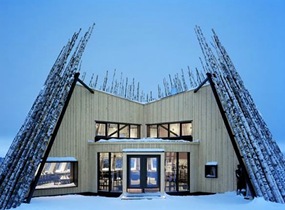 We know about natural wonders of the world like the Grand Canyon, Mount Everest, Niagara Falls and so on...But why not we think about the Man - Made Wonders. Lets talk about the absolute must-see buildings. The ones that will make your jaw drop and will have you asking, "how did they do that!?"
We know about natural wonders of the world like the Grand Canyon, Mount Everest, Niagara Falls and so on...But why not we think about the Man - Made Wonders. Lets talk about the absolute must-see buildings. The ones that will make your jaw drop and will have you asking, "how did they do that!?"
Here is a list of "Top 10 Architectural Wonders Of The World"
10. Empire State Building, New York City, NY
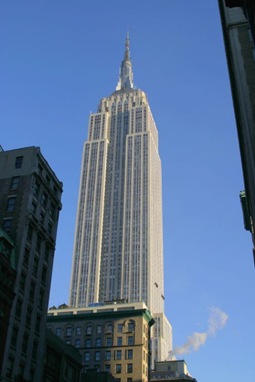
This art deco skyscraper stood as the world's tallest building for more than forty years and now it's 12th. The empire state building is one of the world’s most recognizable skyscrapers. Empire state building is one of the popular attraction in New York city. The tower has 102 storeys and was built in the 30s. There are two observatories, one is on the 86th floor, where you can see a breath-taking 360-degree view of the city. There is also a much smaller observation deck on the 102nd floor.
9. Kogod Courtyard, Washington D.C.
The courtyard was designed to make visitors feel like they’re outside, without having to deal with cold and rain. Thus, a roof was necessary to making the space truly useful, and the architects decided upon a wavy glass and steel structure, with glass panels set in a grid and supported by columns. There are several pools of water, which are only a quarter inch deep. They reflect the courtyard and can also be turned off to accommodate more people in the space. Adorning the courtyard are two 32-foot ficus trees and 16 black olive trees, which are filled in with a variety of shrubs and ferns. The space is 28,000 square feet, and will feature free wireless internet access. it was Designed by Norman Foster, this elegant glass canopy was built as an addition to the museum and houses part of the Smithsonian's art gallery. It won the prestigious Pritzker Architecture Prize in 1999. It's over 28,000 square feet of glass and gives the impression of a floating ceiling.
8. Panama Canal, Panama
Panama canal is a man-made canal was. It remains as one of the most difficult and impressive engineering feats of our time. Panama Canal links the Pacific and Atlantic oceans. Tt was built as a travel port and has had an enormous impact on shipping between the east and west. Each year over 14,000 vessels pass through its concrete tunneled walls. The canal has been enormously successful, and continues to be a key conduit for international maritime trade. The canal can accommodate vessels from small private yachts up to large commercial vessels.
7. Red Ribbon, Qinhuangdao, China
In Qinhuangdao, China the Tanghe River Park features a new installation of a red steel bench that runs for half a kilometre through the park. The Red Ribbon project is th winner of American Society of Landscape Architects award and was also selected by readers of Conde Nast Traveller magazine as one of the seven new wonders of the architecture world. This knee-high red steel bench acts as a viewing place for the area's lush vegetation and diverse species. The challenge of this project is to protect the good ecological condition of the site and to ensure safety hygiene accessiblity and attractiveness, allowing people touse the site as an urban park. This "red ribbon" provides seating, environmental interpretation, lighting and displaying of native plants.
6. Hoover Dam, Border of Arizona and Nevada
Hoover Dam, originally known as Boulder Dam, is a concrete arch-gravity dam in the Black Canyon of the Colorado River, on the border between the U.S. states of Arizona and Nevada. Hoover Dam is one of the world's largest hydro-electric generating stations. Hoover Dam is one of the most jaw-dropping sites in the US. The dam is named after America's 31st president, Herbert Hoover, who played a large role in bringing the nearby states into agreement about water allocations, settling a 25-year controversy. One more great thing about this dam is it was completed ahead of schedule. Construction began in 1931 and finished in 1936. Two years ahead of schedule and well under budget.
5. The Channel Tunnel aka The Chunnel, Europe
The Channel Tunnel, also known as the Chunnel,is a 50.5-kilometre undersea rail tunnel linking Folkestone, Kent in England with Coquelles, near Calais in northern France beneath the English Channel at the Strait of Dover. The Channel actually consists of three tunnels bored in the rock below the seabed of the Channel. Two of the tubes are full sized and accommodate rail traffic. In between the two train tunnels is a smaller service tunnel that serves as an emergency escape route. There are also several cross-over passages that allow trains to switch from one track to another.Today, trains roar through the tunnel at speeds up to 100 miles per hour and it's possible to get from one end to the other in only 20 minutes!
4. CN Tower, Toronto, Ontario, Canada
The CN Tower is the world's tallest building as well as Canada's most recognizable icon. The tower is the centre of tourism in Toronto. From the top of the tower you can view the breathtaking view of downtown Toronto. Things to do in the tower include walking on glass floor, eating over 1000 ft above ground at the revolving 360 Restaurant, watching a movie about the construction of the CN tower and of course enjoying the view. It is also a centre for telecommunications in Toronto.
3.The Guggenheim Museum Bilbao, Basque Country, Spain
The Guggenheim Museum Bilbao is a museum of modern and contemporary art. It was designed by Canadian-American architect Frank Gehry and built by Ferrovial. The museum is located in Bilbao, Basque Country, Spain. It is built alongside the Nervion River, which runs through the city of Bilbao to the Atlantic Coast. The exhibitions in the museum itself change often, the museum hosts thematic exhibitions, centered for example on Chinese or Russian art. The museum features permanent and visiting exhibits of works by Spanish and international artists. The circular body is signature to the architect and was built to showcase the museum's pieces in a unique way. It stands alongside Spain's magnificent Nervion River.
2. Golden Gate Bridge, San Francisco, CA
Arching over the Pacific ocean, the Golden Gate Bridge links San Francisco to Marin County . The Golden Gate Bridge is acclaimed as one of the world's most beautiful bridges and with its tremendous towers, sweeping main cables and great span, it is a sensory beauty featuring color, sound, and light. The Bridge can be a very busy place, particularly during the summer months. Pedestrians can walk the bridge to get sprawling views of San Francisco's harbor. Historically, it's also one of the most photographed bridges in the world.
1. Burj Dubai, United Arab Emirates
Burj Dubai is a supertall skyscraper under construction in Dubai, United Arab Emirates. It is the tallest man-made structure ever built. Construction began on 21 September 2004, and the tower is expected to be completed and ready for occupancy by September 2009. This structure will be the world's tallest building once it's completed. Although the height has been a well-kept secret, experts predict it will be over 2200 feet and tower plans suggest an outdoor swimming pool will be located on the 78th floor and the 124th floor will be an observation deck. It will also, reportedly, contain the world's fastest elevator.







































